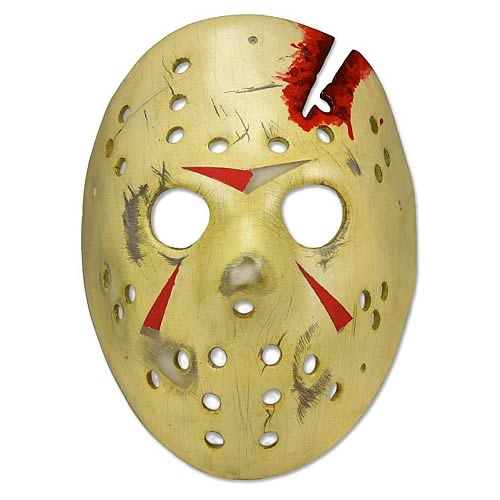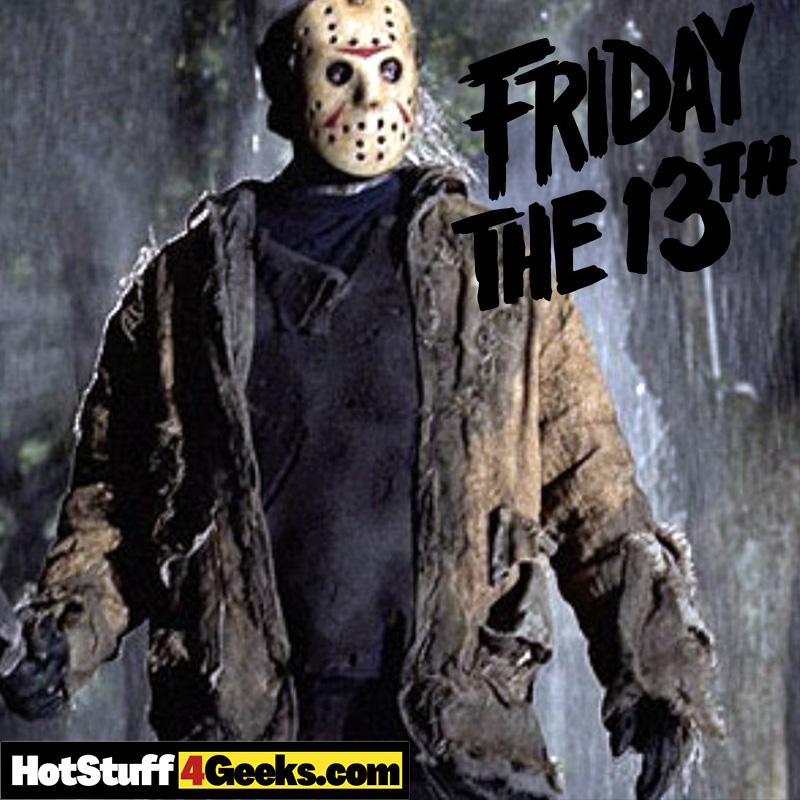The Definitive Exploration of "Friday the 13th": A Journey into Horror, Myth, and Legacy
Welcome again to the fog-shrouded bounds of Crystal Lake, where the specter of Jason Voorhees looms as an icon of horror. This comprehensive dive into the "Friday the 13th" franchise will dissect each aspect of the series, from the intricacies of its many films to its indelible mark on pop culture, providing a thorough examination of the lore, the character, and the enduring legacy of Jason.
The Saga Unfolds: Film-by-Film Analysis
- Friday the 13th (1980): The original film, directed by Sean S. Cunningham, is stark in its simplicity and brutal execution, setting a precedent for the genre. With a budget of just over half a million dollars, it grossed nearly $60 million, proving the allure of the slasher film to audiences worldwide. The story of revenge—Pamela Voorhees avenging the death of her son, Jason, believed to have drowned due to the negligence of camp counselors—taps into a primal fear of parental revenge.
- Friday the 13th Part II (1981): The sequel introduces Jason as the antagonist, wielding his wrath with a sharp-edged implement. This film elaborates on Jason's mythology, revealing his survival and twisted upbringing. The narrative's shift from mother to son deepens the lore and showcases a change toward a more relentless and less human antagonist.
- Friday the 13th Part III (1982): This installment is notable for its 3D effects and Jason's acquisition of his iconic hockey mask. It was a direct continuation of Part II, deepening the audience's unease by transforming Jason from a backwoods killer into a faceless entity of pure malice.
- Through to Friday the 13th (2009): The series evolved with the times, incorporating more sophisticated effects, different settings, and new backstories, though always retaining Jason at the core of the terror. The 2009 reboot, in particular, tried to modernize the origins of Jason, giving him a more calculated and survivalist edge, as opposed to the silent, relentless force of nature seen in earlier films.
Cinematic Craft: Cinematography and Special Effects
Significant special effects and cinematography advancements mark the evolution of the "Friday the 13th" films. Initially reliant on practical effects—prosthetics, makeup, and mechanical rigs—the series became known for its gory creativity. Tom Savini, the legendary special effects makeup artist for the first and fourth films, crafted some of the most memorable death scenes in horror history. As technology progressed, so did the methods of instilling fear. The later films incorporated digital effects, which allowed for more elaborate and graphic depictions of Jason's carnage. However, many fans and critics argue that the tangible, gritty feel of the practical effects in the earlier films delivered a more visceral punch and contributed to the film's enduring appeal.
Cultural Resonance: Jason's Impact on Media and Merchandise
Jason Voorhees transcended the boundaries of horror cinema to become a symbol of fear and a staple of American pop culture. His influence is seen in countless Halloween costumes, parodies, and references across media. The mask is recognizable worldwide, symbolizing not just "Friday the 13th" but horror in general. Merchandising has played a significant role in sustaining the franchise's popularity. From action figures and video games to novels and comic books, Jason's visage and story have been marketed in numerous forms, continually renewing his presence in the horror genre and maintaining a connection with the audience.
Behind the Scenes: Crafting Terror
The "Friday the 13th" films are as full of twists and tales as the movies. Production challenges, like budget constraints and location issues, were commonplace. Directors and writers often had to be exceptionally creative to bring their visions of dread to life. For instance, the original film's climactic decapitation scene required careful choreography and ingenious low-budget effects techniques to shock audiences effectively.
Themes and Ethical Questions
Superstition and Myth: The franchise taps into the deep-seated superstitions surrounding Friday the 13th. Each film in the series explores themes of fate, destiny, and the inescapability of past sins, reflecting societal anxieties about unexplainable misfortune and the eerie coincidence of dates.
Moral Ambiguity: At its core, the series explores the consequences of moral failings—the neglect and abuse suffered by Jason as a child and the irresponsibility of the camp counselors. These themes challenge the audience to reflect on the nature of justice and retribution, asking whether Jason is a simple monster or a tragic figure executing a form of twisted justice.
Unmasking the Legend: The Face and Mask of Jason Voorhees
Few images in horror cinema are as instantly recognizable or as profoundly chilling as Jason Voorhees's mask. It's a symbol that transcends the "Friday the 13th" series, representing the ultimate persona of relentless terror. Yet, beneath the mask lies a visage equally compelling and horrifying—a disfigured face that tells the story of Jason's tragic and brutal past. Look at Jason's face and mask evolution throughout the "Friday the 13th" saga.
The Face of Fear: Jason's Origins
Jason Voorhees was not always the imposing figure clad in a hockey mask. His beginnings are tragic, marked by deformity and neglect. Born with severe facial deformities and hydrocephalus—a condition that causes swelling of the head—Jason's appearance made him the target of intense bullying. The original story tells us that Jason was presumed drowned at Camp Crystal Lake due to the negligence of the camp counselors, who were too busy to notice him struggling. This backstory sets the stage for Jason's transformation into a figure of sympathy and horror. Early depictions of his face, particularly in "Friday the 13th Part 2," show him with a full head of hair and a long beard, his features distorted but not entirely inhuman. It's a pitiable sight of a misunderstood and mistreated soul hiding behind a sack with a single eyehole before he finds his iconic mask.
The Evolution of a Horror Icon: The Hockey Mask
The turning point for Jason's visual identity came with "Friday the 13th Part III." During a struggle with one of his victims, Jason finds a hockey mask, which he uses to cover his facial deformities. This mask quickly became emblematic of the character and a staple of horror iconography. Unlike the sack, the hockey mask completely dehumanizes Jason, turning him into an anonymous force of nature, relentless and seemingly invincible. This mask is not just a shield but a mirror reflecting the audience's fears of them. Its expressionless facade, combined with the eye holes that seem almost soulless, enhances Jason's presence as a silent and unstoppable killer. Over the series, the mask undergoes various changes—gaining cracks, bullet holes, and blood stains—each marking a chapter of Jason's endless battles and his persistence beyond death.
 Grab this epic Jason Voorhees Face mask and get the ultimate cool factor for your collection. With its battle-scarred look and legendary design, it's a total standout piece that'll have your friends talking.
Grab this epic Jason Voorhees Face mask and get the ultimate cool factor for your collection. With its battle-scarred look and legendary design, it's a total standout piece that'll have your friends talking. The Significance of the Mask in Popular Culture
Jason's mask does more than conceal; it reveals. It reveals how horror can stem from the unknown and how anonymity can amplify fear. The mask has permeated popular culture, appearing in everything from Halloween costumes to parodies and even inspiring similar designs in other horror media. Its simplicity—a plain white hockey mask—belies its power as a symbol of pure terror. Moreover, the mask's evolution and the glimpses of the face beneath it throughout the series serve as a narrative device. They remind us of Jason's humanity and his transformation into a mythic figure. When filmmakers choose to reveal his disfigured face, as seen in movies like "Friday the 13th Part VII: The New Blood," it's a pivotal moment that rekindles both empathy and revulsion, a reminder of the boy who drowned and the monster he became.
Jason Unmasked: A Face That Tells a Story
In the rare moments when Jason's face is revealed, it's a climax of horror. The face varies from film to film—sometimes grotesquely swollen, sometimes zombie-like and decayed—but always disturbing. These reveals are a critical part of the series' scare tactics. They shock the audience, compelling them to confront the physical manifestation of the series' central theme: the corruption of innocence and the creation of evil through cruelty and neglect. Jason Voorhees' face and mask are more than just makeup and props; they're integral to the storytelling of the "Friday the 13th" series, encapsulating the tragedy, terror, and mystery that define the franchise. Whether hidden behind a mask or shockingly exposed, Jason's visage will forever be etched in the history of horror as a symbol of relentless dread and enduring evil.
Fan Theories and Events
The "Friday the 13th" fan base is a vibrant, engaged community brimming with theories ranging from the origin of Jason's immortality to alternate timelines and the real power behind his mask. Fan conventions like HorrorHound Weekend and Monster-Mania offer fans the chance to celebrate the series, showcasing everything from screenings and cosplay contests to panels discussing the minutiae of each film. This deep dive into the "Friday the 13th" series reveals a franchise that has not only adapted to the times but has also shaped the horror genre profoundly. From its humble beginnings to its status as a cultural icon, Jason Voorhees remains a figure of terror and fascination, keeping fans returning to Crystal Lake, eager to discover what horrors await in the shadows. Whether you're a die-hard fan or a newcomer to the series, there's always something more to explore in the chilling waters of "Friday the 13th."
 Grab this epic Jason Voorhees Face mask and get the ultimate cool factor for your collection. With its battle-scarred look and legendary design, it's a total standout piece that'll have your friends talking.
Grab this epic Jason Voorhees Face mask and get the ultimate cool factor for your collection. With its battle-scarred look and legendary design, it's a total standout piece that'll have your friends talking. 
